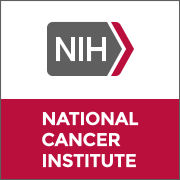预约演示
更新于:2025-05-07
Splenomegaly
脾肿大
更新于:2025-05-07
基本信息
别名 Enlarged Spleen、Enlarged spleen、Enlarged;spleen + [35] |
简介 Enlargement of the spleen. |
关联
7
项与 脾肿大 相关的药物作用机制 ALK2抑制剂 [+2] |
在研适应症 |
非在研适应症 |
最高研发阶段批准上市 |
首次获批国家/地区 美国 |
首次获批日期2023-09-15 |
作用机制 FLT3抑制剂 [+1] |
原研机构 |
在研适应症 |
最高研发阶段批准上市 |
首次获批国家/地区 美国 |
首次获批日期2019-08-16 |
靶点 |
作用机制 PD-1抑制剂 |
在研适应症 |
最高研发阶段批准上市 |
首次获批国家/地区 日本 |
首次获批日期2014-07-04 |
48
项与 脾肿大 相关的临床试验NCT06869499
Niemann-PID: Study of the Prevalence of Acid Sphingomyelinase Deficiency/Niemann Pick AB and B Disease in Patients with Diffuse Interstitial Lung Disease
The goal of this clinical trial is to optimise and facilitate screening for Acid SphingoMyelinase Deficiency (ASMD) disease, by evaluating acid sphingomyelinase activity and, where appropriate, LysoSM levels in a cohort of 200 participants with diffuse interstitial lund disease (ILD) at risk of developing ASMD disease.
ILD is common in the general population, so in order to limit the number of differential diagnoses, the population to be studied will be restricted to participants aged between 15 years and 3 months and 60 years, with ILD plus ground-glass opacities on chest CT scan certified by a pulmonologist/radiologist or internist, AND splenomegaly or splenectomy, and/or thrombocytopenia, and/or low HDL cholesterol, and/or parental consanguinity which increase the sensitivity of ASMD screening.
In this clinical trail, two procedures are added, participants will be asked for :
* a blood sample to measure the acid sphingomyelinase enzyme activity and LysoSM, if required.
* a follow-up visit at 6 months
ILD is common in the general population, so in order to limit the number of differential diagnoses, the population to be studied will be restricted to participants aged between 15 years and 3 months and 60 years, with ILD plus ground-glass opacities on chest CT scan certified by a pulmonologist/radiologist or internist, AND splenomegaly or splenectomy, and/or thrombocytopenia, and/or low HDL cholesterol, and/or parental consanguinity which increase the sensitivity of ASMD screening.
In this clinical trail, two procedures are added, participants will be asked for :
* a blood sample to measure the acid sphingomyelinase enzyme activity and LysoSM, if required.
* a follow-up visit at 6 months
开始日期2025-04-01 |
申办/合作机构 |
NCT06395285
A Phase Ib, Open-Label Study to Evaluate the Safety, Tolerability, and Pharmacokinetics of Orally Administered DF-003 in ROSAH Syndrome Patients
The purpose of this study is to evaluate the safety and tolerability of DF-003 in retinal dystrophy, optic nerve edema, splenomegaly, anhidrosis, and migraine headache (ROSAH) syndrome patients.
开始日期2025-04-01 |
申办/合作机构 |
NCT06743035
Ropeginterferon Alfa-2b in Patients With Polycythemia Vera (PV) Without Symptomatic Splenomegaly: A Prospective, Longitudinal, Multicenter, Observational Study in Germany
The primary objective of this non interventional study is to evaluate symptom burden in adult patients with PV without symptomatic splenomegaly during treatment with ropeginterferon alfa-2b in a real-world setting. Further patient-relevant endpoints include effectiveness including complete hematologic response (CHR), event-free survival (EFS), safety and tolerability, treatment reality including dosing details as well as factors affecting treatment decision making.
开始日期2024-12-03 |
申办/合作机构 |
100 项与 脾肿大 相关的临床结果
登录后查看更多信息
100 项与 脾肿大 相关的转化医学
登录后查看更多信息
0 项与 脾肿大 相关的专利(医药)
登录后查看更多信息
18,318
项与 脾肿大 相关的文献(医药)2025-12-31·Emerging Microbes & Infections
Reverse genetics-derived cattle H5N1 virus from Clade 2.3.4.4b shows enhanced systemic infectivity and pathogenicity than an older Clade 1 H5N1 virus in BALB/c mice
Article
作者: Li, Can ; Ye, Zhanhong ; Chu, Hin ; Wang, Pui ; Chen, Yanxia ; Zhang, Anna Jin-Xia ; Lam, Alvin Hiu-Chung ; Chen, Honglin ; Kok, Kin-Hang ; Song, Wenchen ; Oong, Xiang Yong ; Cai, Jianpiao ; Yuan, Shuofeng ; Lee, Andrew Chak-Yiu ; Chung, Howard Chun-Ho ; Xiao, Na ; Chan, Jasper Fuk-Woo ; Yuen, Kwok-Yung
2025-12-31·Virulence
Insights and progress on epidemic characteristics, pathogenesis, and preventive measures of African swine fever virus: A review
Review
作者: Zheng, Haixue ; Li, Mei
2025-12-31·Annals of Medicine
Existence and significance of anti-HLA-C autoantibodies to primary and persistent platelet transfusion refractoriness in patients with hematologic disorders: a retrospective study from a single centre
Article
作者: Li, Xunhua ; Zhou, Yuhong ; Shen, Yingying ; Wu, Dijiong ; Li, Hangchao ; Wang, Peicheng ; Dong, Jingjie ; Xin, Chuanao ; Ye, Baodong ; Guo, Junfeng ; Liu, Shan ; Liu, Qi ; Shen, Yiping ; Hu, Tonglin ; Shen, Jianping ; Yang, Xiawan ; Sun, Zexing ; Hong, Yaonan
154
项与 脾肿大 相关的新闻(医药)2025-04-30
·药时代
从泽布替尼到索托克拉,百济神州血液肿瘤管线再突破。2025年4月28日,国家药品监督管理局(NMPA)药品审评中心(CDE)正式受理百济神州在研BCL2抑制剂索托克拉片(英文通用名: sonrotoclax)的新药上市申请(NDA),并已纳入优先审评程序,拟用于治疗既往接受过治疗的慢性淋巴细胞白血病(CLL)/小淋巴细胞淋巴瘤(SLL)成人患者。索托克拉是百济神州自主研发的新一代BCL2抑制剂,也是百济神州继泽布替尼之后有望面市的又一款血液肿瘤的自研产品,或将进一步夯实百济神州在CLL/SLL治疗领域的研发实力。截图来自:CDE官网百济神州高级副总裁、全球研发负责人汪来博士表示:“CLL/SLL是成人常见的血液系统恶性肿瘤,改善患者的长期生存和生活质量至关重要。很高兴看到百济神州在新一代BCL2抑制剂领域取得突破。我们将继续致力于推动创新药物的研发与落地,以期为中国患者带来更多创新治疗选择。”CLL是一种危及生命的B淋巴细胞恶性肿瘤,是成人血液肿瘤最常见的类型之一1、2。CLL源于骨髓的异常白血病B淋巴细胞(白细胞的一种),并可累及外周血和淋巴组织。SLL与CLL是同一种疾病的不同表现,约20%的SLL会进展为CLL3。典型症状包括淋巴结肿大、脾肿大、疲劳、体重减轻和反复感染等4。中国CLL发病率约为三十七万分之一,每年新增患者7000-8000例,患者主要为老年人群,中位发病年龄为65岁5。相较西方国家,中国CLL患者的中位生存期较短,且更容易出现疾病进展和复发,总体预后情况较差6、7。随着中国人口老龄化加速及临床诊断水平提升,中国CLL发病率持续上升。近年来,创新治疗方式不断涌现,以BTK抑制剂、CD20单抗等为代表的靶向治疗药物不断改善CLL患者的预后,开启了CLL治疗的“无化疗”时代。但CLL患者的预后仍存在诸多未被满足的需求,包括缓解深度不够,高危患者生存期有待改善,长期用药依从性不佳等。为此,临床正在开展广泛探索以满足患者的未尽之需。围绕BCL2靶点的临床研究为改善CLL患者预后提供了新的可能。BCL2蛋白是一种调控细胞自然死亡的关键因子,在多种血液恶性肿瘤中有不同程度的表达,是肿瘤细胞逃避凋亡、以及产生耐药的重要因素之一8。BCL2抑制剂能特异性地结合并抑制BCL2蛋白,模拟自然细胞死亡信号,从而诱导癌细胞死亡。BCL2抑制剂的出现,为CLL治疗开辟了全新路径。索托克拉作为百济神州自主研发的新一代BCL2抑制剂,旨在阻断可帮助肿瘤细胞存活的BCL2蛋白。实验室和早期药物开发研究结果已表明,索托克拉半衰期短且无蓄积,已在多种B细胞恶性肿瘤中表现出良好的临床活性9。得益于BCL2抑制剂通过恢复凋亡程序增强其他疗法的杀伤效果,以及同时覆盖多通路以克服耐药性的核心作用机制,其在靶向联合、免疫联合等领域应用前景广阔。目前,临床上已有BCL2抑制剂与BTK抑制剂、化疗、免疫治疗等药物联合使用的临床研究,或可进一步提升临床获益。除了索托克拉单药治疗的探索,百济神州已开展了四项索托克拉联用泽布替尼的联合治疗相关临床研究,包括两项分别用于治疗华氏巨球蛋白血症(WM)、未经治疗的慢性淋巴细胞白血病(TN CLL)的2期临床试验和两项分别用于治疗TN CLL、复发/难治性套细胞淋巴瘤(R/R MCL)的3期临床试验。其中,索托克拉联合泽布替尼作为固定周期治疗方案,在3期CELESTIAL试验中用于CLL患者的一线治疗10,有望进一步推动CLL从长期治疗转变为有限周期治疗。根据百济神州公开披露信息,截至目前,百济神州围绕索托克拉已针对不同适应症和不同联合治疗入组了1800多例患者,且现有临床研究所获得的有效性信号和安全性数据持续印证了该药物在临床前试验中表现出的潜力。1.National Cancer Institute. Chronic Lymphocytic Leukemia Treatment (PDQ)–Patient Version. Accessed November 2023. https://www.cancer.gov/types/leukemia/hp/cll-treatment-pdq.2.American Cancer Society. What is Chronic Lymphocytic Leukemia? Updated May 10, 2018. Accessed November 2023. https://www.cancer.org/cancer/types/chronic-lymphocytic-leukemia/about/what-is-cll.html.3.中国抗癌协会血液肿瘤专业委员会,中华医学会血液学分会.中国慢性淋巴细胞白血病/小淋巴细胞淋巴瘤的诊断与治疗指南(2022年版)4.仝佳音,侯韶英,杨学文,赵小强,刘静静.慢性淋巴细胞白血病患者PD-1免疫抑制剂治疗的疗效及预后[J].实用癌症杂志,2024,39(6):953-956.5.朱水清,杜立哲,陶立波,肖敦明,张玥,徐映锐,宣建伟.中国慢性淋巴细胞白血病患者的年均经济负担分析[J].中国医疗保险,2018,(11):56-62.6.马兰,李艳,王继军,景红梅.慢性淋巴细胞白血病患者临床特征及长期生存分析[J].中国实验血液学杂志,2023,31(5):1345-13517.丁艳玲,李杰,袁军,李燕.慢性淋巴细胞白血病靶向治疗的研究进展[J].上海交通大学学报(医学版),2024,44(2):264-270.8.曾文,田俊波,肖建华,董自强.Bcl-2抑制剂研究进展[J].实用医学杂志,2013,29(4):665-666.9.Pau Montesinos, et al. "Preliminary Safety and Antileukemic Activity of Sonrotoclax (BGB-11417), a Potent and Selective BCL2 Inhibitor, in Patients with Relapsed/Refractory Acute Myeloid Leukemia." Montesinos BGB-11417-103 RR EHA Abstract 2024. EHA 2024.10.Mazyar Shadman et al. CELESTIAL-TNCLL: An ongoing, open-label, multiregional, phase 3 study of sonrotoclax (BGB-11417) + zanubrutinib vs venetoclax + obinutuzumab for treatment-naïve (TN) CLL.. JCO 42, TPS7087-TPS7087(2024).DOI:10.1200/JCO.2024.42.16_suppl.TPS7087百济神州PD-1在美国开出首张处方!自有国际实体瘤商业化团队开启新篇章2024-10-28今晚8点!百济PD-1面临FDA大考2024-09-25百济神州持续深耕血液肿瘤领域引领全新时代2024-07-16点击这里,更多了解百济神州!
优先审批申请上市临床研究
2025-04-30
·研发客
2025年4月28日,国家药品监督管理局(NMPA)药品审评中心(CDE)正式受理百济神州在研BCL2抑制剂索托克拉片(英文通用名: sonrotoclax)的新药上市申请(NDA),并已纳入优先审评程序,拟用于治疗既往接受过治疗的慢性淋巴细胞白血病(CLL)/小淋巴细胞淋巴瘤(SLL)成人患者。索托克拉是百济神州自主研发的新一代BCL2抑制剂,也是百济神州继泽布替尼之后有望面市的又一款血液肿瘤的自研产品,或将进一步夯实百济神州在CLL/SLL治疗领域的研发实力。来源|CDE官网百济神州高级副总裁、全球研发负责人汪来博士表示:“CLL/SLL是成人常见的血液系统恶性肿瘤,改善患者的长期生存和生活质量至关重要。很高兴看到百济神州在新一代BCL2抑制剂领域取得突破。我们将继续致力于推动创新药物的研发与落地,以期为中国患者带来更多创新治疗选择。”CLL是一种危及生命的B淋巴细胞恶性肿瘤,是成人血液肿瘤最常见的类型之一1,2。CLL源于骨髓的异常白血病B淋巴细胞(白细胞的一种),并可累及外周血和淋巴组织。SLL与CLL是同一种疾病的不同表现,约20%的SLL会进展为CLL3。典型症状包括淋巴结肿大、脾肿大、疲劳、体重减轻和反复感染等4。中国CLL 发病率约为三十七万分之一,每年新增患者 7000~8000 例,患者主要为老年人群,中位发病年龄为65岁5。相较西方国家,中国CLL患者的中位生存期较短,且更容易出现疾病进展和复发,总体预后情况较差6,7。随着中国人口老龄化加速及临床诊断水平提升,中国CLL发病率持续上升。近年来,创新治疗方式不断涌现,以BTK抑制剂、CD20单抗等为代表的靶向治疗药物不断改善CLL患者的预后,开启了CLL治疗的“无化疗”时代。但CLL患者的预后仍存在诸多未被满足的需求,包括缓解深度不够,高危患者生存期有待改善,长期用药依从性不佳等。为此,临床正在开展广泛探索以满足患者的未尽之需。围绕BCL2靶点的临床研究为改善CLL患者预后提供了新的可能。BCL2蛋白是一种调控细胞自然死亡的关键因子,在多种血液恶性肿瘤中有不同程度的表达,是肿瘤细胞逃避凋亡、以及产生耐药的重要因素之一8。BCL2抑制剂能特异性地结合并抑制BCL2蛋白,模拟自然细胞死亡信号,从而诱导癌细胞死亡。BCL2抑制剂的出现,为CLL治疗开辟了全新路径。索托克拉作为百济神州自主研发的新一代 BCL2 抑制剂,旨在阻断可帮助肿瘤细胞存活的BCL2蛋白。实验室和早期药物开发研究结果已表明,索托克拉半衰期短且无蓄积,已在多种B细胞恶性肿瘤中表现出良好的临床活性9。得益于BCL2抑制剂通过恢复凋亡程序增强其他疗法的杀伤效果,以及同时覆盖多通路以克服耐药性的核心作用机制,其在靶向联合、免疫联合等领域应用前景广阔。目前,临床上已有BCL2抑制剂与BTK抑制剂、化疗、免疫治疗等药物联合使用的临床研究,或可进一步提升临床获益。除了索托克拉单药治疗的探索,百济神州已开展了四项索托克拉联用泽布替尼的联合治疗相关临床研究,包括两项分别用于治疗华氏巨球蛋白血症(WM)、未经治疗的慢性淋巴细胞白血病(TN CLL)的2期临床试验和两项分别用于治疗TN CLL、复发/难治性套细胞淋巴瘤(R/R MCL)的3期临床试验。其中,索托克拉联合泽布替尼作为固定周期治疗方案,在3期CELESTIAL试验中用于CLL患者的一线治疗10,有望进一步推动CLL从长期治疗转变为有限周期治疗。根据百济神州公开披露信息,截至目前,百济神州围绕索托克拉已针对不同适应症和不同联合治疗入组了1800多例患者,且现有临床研究所获得的有效性信号和安全性数据持续印证了该药物在临床前试验中表现出的潜力。参考来源:(滑动查看)1.National Cancer Institute. Chronic Lymphocytic Leukemia Treatment (PDQ)–Patient Version. Accessed November 2023. https://www.cancer.gov/types/leukemia/hp/cll-treatment-pdq.2.American Cancer Society. What is Chronic Lymphocytic Leukemia? Updated May 10, 2018. Accessed November 2023. https://www.cancer.org/cancer/types/chronic-lymphocytic-leukemia/about/what-is-cll.html.3.中国抗癌协会血液肿瘤专业委员会,中华医学会血液学分会.中国慢性淋巴细胞白血病/小淋巴细胞淋巴瘤的诊断与治疗指南(2022年版)4.仝佳音,侯韶英,杨学文,赵小强,刘静静.慢性淋巴细胞白血病患者PD-1免疫抑制剂治疗的疗效及预后[J].实用癌症杂志,2024,39(6):953-956.5.朱水清,杜立哲,陶立波,肖敦明,张玥,徐映锐,宣建伟.中国慢性淋巴细胞白血病患者的年均经济负担分析[J].中国医疗保险,2018,(11):56-62.6.马兰,李艳,王继军,景红梅.慢性淋巴细胞白血病患者临床特征及长期生存分析[J].中国实验血液学杂志,2023,31(5):1345-13517.丁艳玲,李杰,袁军,李燕.慢性淋巴细胞白血病靶向治疗的研究进展[J].上海交通大学学报(医学版),2024,44(2):264-270.8.曾文,田俊波,肖建华,董自强.Bcl-2抑制剂研究进展[J].实用医学杂志,2013,29(4):665-666.9.Pau Montesinos, et al. "Preliminary Safety and Antileukemic Activity of Sonrotoclax (BGB-11417), a Potent and Selective BCL2 Inhibitor, in Patients with Relapsed/Refractory Acute Myeloid Leukemia." Montesinos BGB-11417-103 RR EHA Abstract 2024. EHA 2024.10.Mazyar Shadman et al. CELESTIAL-TNCLL: An ongoing, open-label, multiregional, phase 3 study of sonrotoclax (BGB-11417) + zanubrutinib vs venetoclax + obinutuzumab for treatment-naïve (TN) CLL.. JCO 42, TPS7087-TPS7087(2024).DOI:10.1200/JCO.2024.42.16_suppl.TPS7087
优先审批申请上市
2025-04-29
·百济神州
2025年4月28日,国家药品监督管理局(NMPA)药品审评中心(CDE)正式受理百济神州在研BCL2抑制剂索托克拉片(英文通用名:sonrotoclax)的新药上市申请(NDA),并将其拟纳入优先审评程序,拟适用于治疗既往接受过治疗的慢性淋巴细胞白血病(CLL)/小淋巴细胞淋巴瘤(SLL)成人患者。CLL/SLL是成人常见的血液系统恶性肿瘤,改善患者的长期生存和生活质量至关重要。很高兴看到百济神州在新一代BCL2抑制剂领域取得突破。我们将继续致力于推动创新药物的研发与落地,以期为中国患者带来更多创新治疗选择。CLL是一种危及生命的成人癌症,源于骨髓的异常白血病B淋巴细胞(白细胞的一种)在外周血、骨髓和淋巴组织中蓄积,形成成熟B细胞恶性肿瘤1,2。SLL与CLL是同一种疾病的不同表现,约20%的SLL会进展为CLL3。索托克拉是百济神州开发的一款新一代BCL2抑制剂,旨在阻断可帮助肿瘤细胞存活的BCL2蛋白。BCL2蛋白异常高表达在CLL/SLL等多种血液恶性肿瘤中广泛存在,其通过阻断细胞凋亡程序,为肿瘤细胞营造了持续存活与增殖的有利环境。BCL2抑制剂能特异性地结合并抑制BCL2蛋白,有效恢复肿瘤细胞的凋亡通路,诱导癌细胞死亡。CLL/SLL多发生于中老年人群4,典型症状包括淋巴结肿大、脾肿大、疲劳、体重减轻和反复感染等5。相较西方国家,中国CLL/SLL患者的中位生存期较短,且更容易出现疾病进展和复发,总体预后情况较差6,7。随着中国人口老龄化加速及临床诊断水平日趋精准,CLL/SLL的发病率还在持续上升,尚有患者未尽之需亟待满足。*本材料仅在于向公众传递疾病相关知识及医药前沿信息,非广告用途,不构成对任何药物的商业推广或对诊疗方案的推荐,亦不能代替医疗卫生专业人士的意见,如有任何问题请向医疗卫生专业人士咨询。*本文包含前瞻性陈述,实际结果可能与前瞻性陈述中的结果存在差异。本文所有信息仅及于本文发布之日,除非法律要求,百济神州并无责任更新该等信息。参考文献1.National Cancer Institute. Chronic Lymphocytic Leukemia Treatment (PDQ)–Patient Version. Accessed November 2024. https://www.cancer.gov/types/leukemia/hp/cll-treatment-pdq.2.American Cancer Society. What is Chronic Lymphocytic Leukemia? Updated May 10, 2018. Accessed November 2024. https://www.cancer.org/cancer/types/chronic-lymphocytic-leukemia/about/what-is-cll.html.3.中国抗癌协会血液肿瘤专业委员会,中华医学会血液学分会.中国慢性淋巴细胞白血病/小淋巴细胞淋巴瘤的诊断与治疗指南(2022年版).4.中国临床肿瘤学会指南工作委员会,等. 2023年CSCO淋巴瘤诊疗指南.5.仝佳音,侯韶英,杨学文,赵小强,刘静静.慢性淋巴细胞白血病患者PD-1免疫抑制剂治疗的疗效及预后[J].实用癌症杂志,2024,39(6):953-956.6.马兰,李艳,王继军,景红梅.慢性淋巴细胞白血病患者临床特征及长期生存分析[J].中国实验血液学杂志,2023,31(5):1345-1351.7.丁艳玲,李杰,袁军,李燕.慢性淋巴细胞白血病靶向治疗的研究进展[J].上海交通大学学报(医学版),2024,44(2):264-270.
优先审批申请上市临床研究
分析
对领域进行一次全面的分析。
登录
或

Eureka LS:
全新生物医药AI Agent 覆盖科研全链路,让突破性发现快人一步
立即开始免费试用!
智慧芽新药情报库是智慧芽专为生命科学人士构建的基于AI的创新药情报平台,助您全方位提升您的研发与决策效率。
立即开始数据试用!
智慧芽新药库数据也通过智慧芽数据服务平台,以API或者数据包形式对外开放,助您更加充分利用智慧芽新药情报信息。
生物序列数据库
生物药研发创新
免费使用
化学结构数据库
小分子化药研发创新
免费使用






